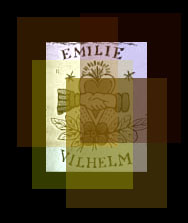


Identity Documents My overarching project is to explore the origins and uses of the documents and techniques which are used nowadays as official evidence of our individual identity, to confirm that we are who we say we are and who the authorities think we are. We're identified by these pieces of paper and entries in records literally from our birth certificate to our death registration. In between, most of us will be issued with a social security number, a passport and a driver's licence, we'll be 'carded' at a pub or off-licence, we'll give a sample signature to a bank and endorse innumerable documents with our names. Maybe some of us will acquire documents that register a new surname or a change of nationality. Others who are less fortunate or law-abiding will have their fingerprints taken by the police, or in the US they'll have their description and photograph displayed by the FBI in post offices; and immigrants in all countries know too well what it means to be 'undocumented'.
In other words, we are reminded every day that we live in an enveloping world of licenses and forms and 'ID'. We may be concerned at the ways in which a culture based on mass identification compromises personal privacy, or perhaps we are fascinated by the latest developments in forensic science. But how often do we stop to think how this state of affairs has come about over time? Why do some countries but not others have mandatory identity cards for all citizens? How were these countless daily acts of official recognition and identification managed in the days before the invention of photography or the discovery of the fingerprint?
For some early answers to these questions, look at Jane Caplan & John Torpey, eds., Documenting Individual Identity. The Development of State Practices in the Modern World (Princeton University Press 2001). More recently I have co-organized 'IdentiNet', an International Network on the history of identification, supported by a grant from the Leverhulme Trust. This website explains our aims and activities, and provides extensive supporting information and links.
The Tattoo When I was first working on the subject, I unexpectedly found myself drawn into the world of the tattoo, an familiar mark that has a rich and fascinating history in Europe. Because of their potential value as a means of identifying both known people and unidentified bodies, tattoos attracted a lot of attention among policemen and forensic experts in the 19th century. A famous murder case in Berlin in the 1850s turned on the question whether an unidentified corpse had been tattooed or not. The publicity that surrounded this case generated a burst of research and a lively exchange of views among policemen, forensic scientists and criminologists through the rest of the century. They explored such questions as who got tattooed and why, the techniques of tattooing, whether tattoos really were indelible, what the images meant, where the custom came from. Their debates have left us a mass of intriguing and unexpected evidence about the practice of tattooing in l9th-century Europe.
The story these 19th-century sources wanted to tell about tattooing was roughly this: Tattooing was a primitive practice that had died out in Europe as Christian civilization advanced, but had survived elsewhere in the 'uncivilized' world. The Christian body was to be marked only as a sign of infamy - hence the branding and mutilation of medieval criminals and slaves. But then 18th-century European sailors rediscovered the tattoo among Pacific islanders, and brought the exotic art back to Europe. There it spread among lower-class men, becoming especially popular among the unsettled and the marginal, men outside 'normal' society, who had little status and too much empty time - soldiers in barracks [Fig. 1], convicts in prison [Fig.2]. Some 19th-century writers saw this irruption of primitive practices in modern Europe as evidence that the tattooed were themselves atavistic, that tattoos were outward signs of an innately degenerate criminal character. Others did not go this far in stigmatizing them, but still treated tattooing as something uncivilized and shameful that was best discouraged. If you want to see what I came up with, look at Jane Caplan, ed., Written on the Body. The Tattoo in European and American History (Reaktion Books, London/Princeton UP, 2000).
Policing and Proving Identity I remain interested in researching the semiotics of identity and its documentary coding and recording: how 'people' have been put onto 'paper', and the consequences of this for both the recorders and the recorded. My current research investigates the policing and proof of identity in Nazi Germany. The protocols, practices and objectives of official identification were massively extended and complicated under this regime. Existing institutions and methods of identification (for example, residence registration, civil status administration and the identity document) were remodelled or substantively changed, especially for the purposes of racial exclusion and social control. My research explores not only official policy and techniques in this field, but also the experiences of individuals caught up in the Nazi state's virtually universal embrace, as their subjective identities collided with new laws and assumptions. I have also begun to study the administration of the civil register offices in this period, and more generally the longer-term history of civil status as a concept and practice.
My recent publications in these fields include:
'Indelible Memories. The Tattooed Body as Theatre of Memory', in Performing the Past. Memory and the Making of European Culture, eds. F. van Vree et al. (Amsterdam UP/Chicago UP, 2010), 119-46.
If you want to contact me, my email is jane.caplan@sant.ox.ac.uk